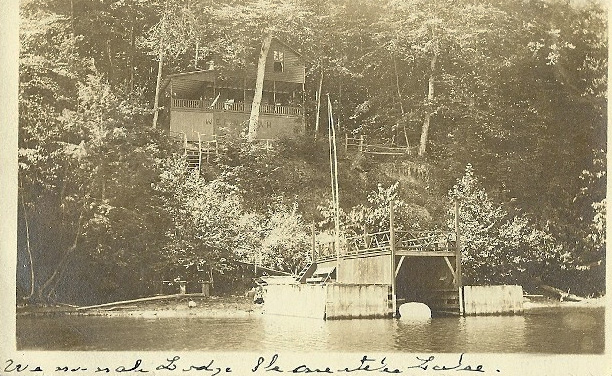For many summers, Dr. Edwin Tyler Darby (1846-1929) enjoyed his summer home near Glen Haven, where his country pursuits contrasted markedly with his professional career as a dental surgeon and educator. As a young man, he attended the Cortland Academy, in Homer, N.Y., and then apprenticed at dentistry with Dr. Ransom Walker in Oswego. At the age of 17, he started his own dental practice. In 1864, he entered the Pennsylvania College of Dental Surgery in Philadelphia and graduated the following year with the degree of Doctor of Dental Surgery.
In 1865, he was elected chief demonstrator of operative dentistry in the college, and in 1866, he married Caroline Beers Thomas. His professional practice grew rapidly, too rapidly in fact, affecting his health. In 1870, he closed his office for a year and sailed for Europe, touring the Continent and wintering in Egypt and the Holy Land. In 1871, he returned refreshed, and resumed his practice in Philadelphia.
In 1878, the University of Pennsylvania established a dental school and Darby became its head, with a newly conferred M.D. He was intensely devoted to his work, and his achievements as a teacher and dental surgeon “unquestionably” placed him at the head of his profession in the U.S.
The Darby family, which included a son and three daughters, lived in Lansdowne, a suburb of Philadelphia and, at some point, began summering on Skaneateles Lake. Glen Haven offered Dr. Darby respite and balance.
His great-granddaughter, Susan Darby Eaton Rudolph, writes:
“Dr. Darby built his summer home in 1898. He had been summering with his family before that, staying at the Glen Haven Hotel. The cottage included many out-buildings such as the workshop, the barn, a big ice house, a wood shed, a big cold cellar built in the side of the hill by the kitchen. Down the lake was a two- story boat house with the second story being a big bedroom. There were several boats including a Skaneateles Row Boat. The land behind the house on the hillside was cleared and they actually farmed it. It was a very steep hill, but they had an apple orchard, grape vines, currants, cows and horses. My father says he used to help his Grandmother Darby ‘can the currants and apples’ for jelly. When he built the cottage, he persuaded some of his doctor friends to build cottages, too. My father thinks they were Dr. [Matthew] Cryer, Dr. [Dudley] Guilford, and Dr. [Edward] Kirk.”
Dr. Darby’s recreations at his summer home were reading, rowing, walking, driving, and “tinkering” in his shop (shown below). Among his projects were dental instruments, many still used throughout the world, including the Darby-Perry Scaler.
In 1909, a banquet was held at the Waldorf-Astoria in New York City to celebrate Dr. Darby’s career, and 200 of his colleagues attended. In his lifetime, Dr. Darby received “almost every honor that the dental profession can confer.” One biographer noted, “He was in constant demand as an after-dinner speaker, conspicuous in always saying the right thing in the right place. Besides having good sense, he had unfailing good taste.”
In 1926, a writer noted, “He hopes to spend the rest of his life doing some of the things that his active professional career has prevented him from accomplishing.”
Dr. Darby died December 11, 1929, of pneumonia, in Lansdowne.
* * *
The photographs here were taken by Dr. Matthew Henry Cryer, who was first a student and then a colleague and life-long friend of Dr. Darby. The interior photograph of the den appeared in House Beautiful in May of 1902, and the exterior of the cottage, and the two photos of the workshop, are from Items of Interest: A Monthly Journal of Dental Science, Art and Literature, April 1909.
* * *
One of Dr. Darby’s guests at his cottage was his son-in-law, Charles Harold Davis (1856-1933), an American landscape painter who married Francis Tyler Darby. Davis was said to have painted landscapes while here.












